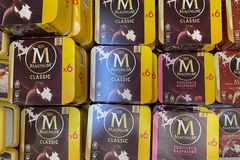
- Industry news
Industry news
- Category news
Category news
- Reports
- Key trends
- Multimedia
- Journal
- Events
- Suppliers
- Home
- Industry news
Industry news
- Category news
Category news
- Reports
- Key trends
- Multimedia
- Events
- Suppliers
Conair Introduces New High-Heat TrueBlend Blender

Responding to environmental concerns, companies are using ever greater volumes of post-industrial and post-consumer recycled PET, particularly in sheet that is commonly thermoformed into yogurt cups and other disposable food containers.

3/25/2011 --- Producers of PET sheet, strapping and other products that incorporate high levels of recycled polyester plastics can realize significant energy savings and productivity benefits by using a new fully-insulated gravimetric blender from Conair.
The new high-heat TrueBlend blender allows processors to keep recycled and virgin materials separated until just before they are fed to an extruder or molding machine. This approach yields several distinct advantages:
* A problem in one material stream (contamination in recycled PET, for instance) need not shut down the entire production line.
* Blended virgin pellets and regrind fluff, which have significantly different bulk densities and flow characteristics, reach the machine feed throat more quickly and have less of an opportunity to become re-separated during conveying.
* By not allowing the heat input during desiccant drying to dissipate during blending, less energy needs to be added during final processing.
Responding to environmental concerns, companies are using ever greater volumes of post-industrial and post-consumer recycled PET, particularly in sheet that is commonly thermoformed into yogurt cups and other disposable food containers. Makers of polyester strapping, used in packaging and material handling, are also heavy users of recycled PET.
“In most conventional operations, recycled PET flake is blended with virgin pellets after the flake has been re-crystallized and before the material is dried,” explains Gene Flockerzi, Vice President, Sales – Packaging. “If contamination is discovered in the recycle stream, it will likely be only after the blended material has been through the drying process, which can take as long as six hours. The line will then need to be shut down completely while the drying hopper is emptied of thousands of pounds of material, including both contaminated regrind and uncontaminated virgin pellets. This can easily take two or three hours. Then it can take another two or three hours to reload the hopper and six hours on top of that to dry the new material. You can lose as much as 12 hours of production, plus the cost of the contaminated blend.”
Using the new Conair blender, Flockerzi says, if contamination is discovered in the regrind (a relatively common occurrence) only the regrind stream needs to be cleaned up and production can continue using 100% virgin resin. In addition, recrystallized recycled flake does not need to be dried as long as virgin pellets. After one hour of crystallization, only three hours of desiccant drying is needed. This cuts the energy required to dry the recycled PET by half.
These same benefits could be achieved using a more conventional blender, of course, but the PET material, which exits the dryer at approximately 350°F (176°C), would cool considerably during the conveying and blending process. Then, when the blended resin is fed to the extruder or molding machine, this wasted heat would need to be reintroduced. “What we have tried to do is retain every possible BTU so that nothing is wasted during the entire process,” Flockerzi explains. “By saving our customers every possible dollar in processing costs, Conair can help them be more competitive.”
Most PET-packaging producers consume high-volumes of material and so the Conair insulated blenders are available in sizes to handle as much as 5000 lb (2273 kg) per hour. The standard unit includes two material hoppers for virgin and regrind, but systems with three, four or more hoppers are also available.
Designed for accurate blending of hot material
The unique design of the new Conair blenders begins in the material hoppers, which look very much like drying hoppers. They are insulated to minimize heat loss and they have a steep (60°) cone angle at the bottom to encourage mass flow of material through the hopper. Together with smooth interior wall surfaces, this cone design ensures that all material spends the same amount of time in the hopper and prevents heat loss and moisture regain.
All blender components – including load-cells, level sensors and air cylinders have been specified for their ability to stand up to temperatures of 375°F (191°C), and higher. Electronic components are isolated from elevated temperatures. This prevents premature failure or generation of erroneous data that results in diminished mixing accuracy.
Beneath the mixing chamber, the conventional surge bin is replaced by another insulated drying hopper. All piping, from material hoppers to the mixing chamber and from the mixer to the blended-material hopper below, is also insulated. All areas of the blender including material hoppers and the mixing chamber are blanketed with dry air to prevent moisture regain during blending.
Like all TrueBlend blenders, the new insulated models feature a fully enclosed weighing and mixing section that makes the TrueBlend unique in the industry. With the access door closed, all pellets are contained in a controlled environment. With all ingredients contained and accounted for, the Conair blenders can be accurate to within ±0.5% of setpoint on material weights. No blender is more accurate. The standard microprocessor control adjusts after every dispense cycle, compensating automatically on the next weighed batch for normal variations in dispensing, as well as for resin bulk density and particle geometry. After virgin and regrind are dispensed and weighed, they are dumped into a mixing chamber, which holds multiple batches of material. These individual batches are mixed for a set time, averaging out any specific batch-to-batch differences before the blend finds its way to the machine feed throat.
The ultra-simple control system features a user interface with an easy-to-read 5.7-inch LCD touch-screen panel with full color graphics. All setpoints are displayed simultaneously, so setup is quick and easy. The user enters the percentages of the blend on the touch-screen display and the blender does the rest, automatically weighing the recipe ingredients in the proper sequence and maintaining the correct blend relationship. Up to 50 recipes can be entered and stored in the control for instant recall. Options include an integrated blender/loader control feature.










